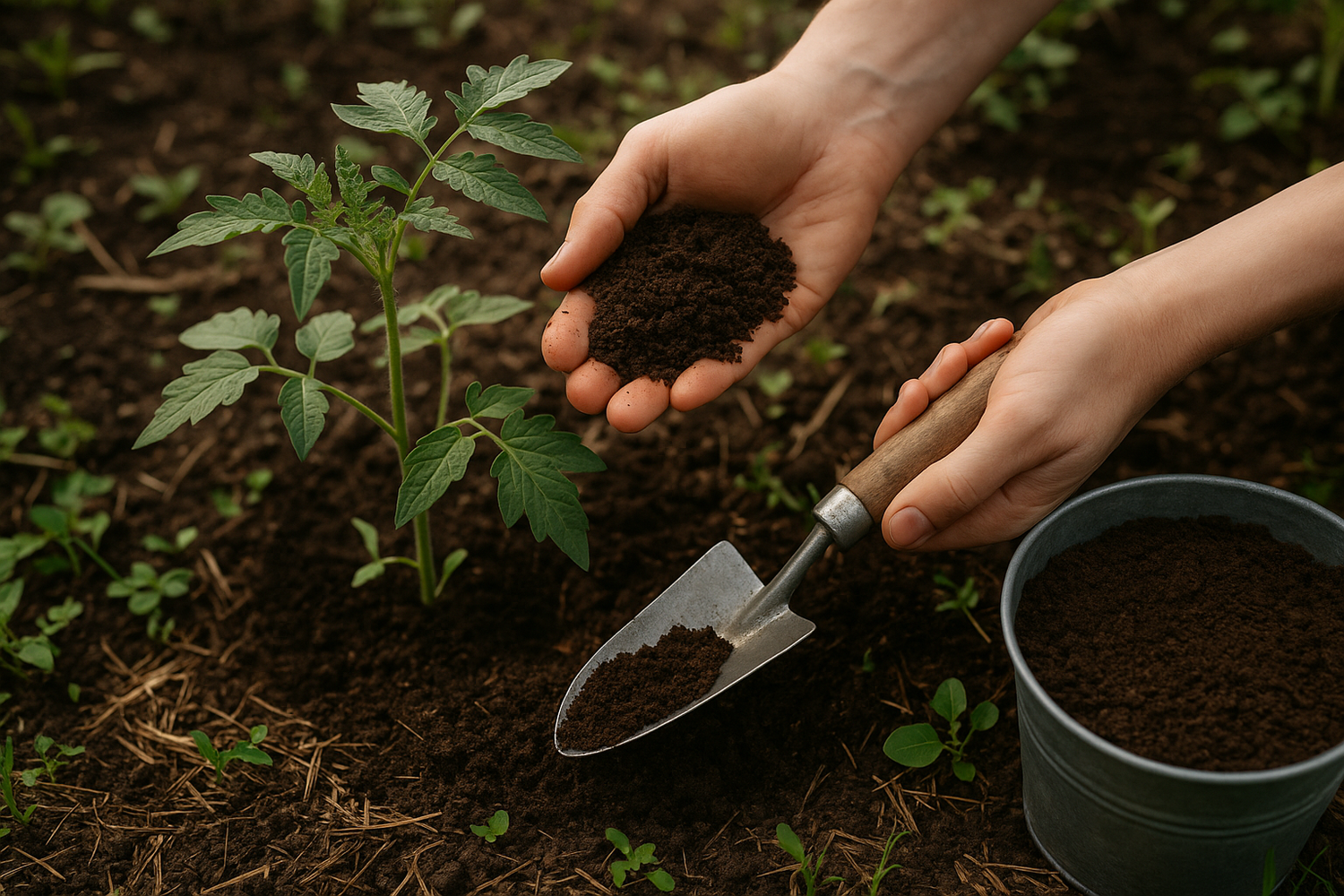Worm Castings are earthy gold for your gardening goals. The trick lies in not overdoing it, and voila! You’ll see the golden harvest.
What Are Worm Castings?
Worm Castings are bacteria-enriched organic matter. They are produced by vermicomposting. It increases the soil’s capacity to hold more water, let air pass through, and be fertile.
Worm castings are a natural fertilizer that homes microbial communities. These interact with your soil over time. It’s an ecosystem that you slowly create around your plants. Doing so, you can influence the environment around its roots. Thus, reducing dependency on synthetic inputs.
They give your garden the nutrients it craves, such as nitrogen, phosphorus, potassium, calcium, etc. These nutrients are slowly released for the garden to have steady growth. They are not like chemical fertiliser, which throws your soil off balance or burns tender roots.
What are the benefits of Worm Castings?
Wondering how to use worm castings to reap their highest benefits? Here they are:
- Worm Castings are gentle, odor-free, and do not affect your plant adversely.
- The organic casting boosts root development.
- They have the right amount of pH level (7) and adequate nitrogen (2-5%) required for growth.
- Worm Castings help the soil gain good bacteria and microbes, which aid in soil health.
- With heightened fertility of the soil, the rate of germination increases as well.
- They keep away mites and bugs from your plants.
- They are versatile and can function in many garden types.
- Improves the plant’s resistance under stress, and has a stronger structure.
- Most importantly, they prepare the best environment for red wigglers. These are composting worms that many gardeners love to use.
Remember, patience is the key. Not all results will be immediate.
The Science Behind The Miracle
Tom Herlihy of Worm Power says, “If we know our vermicompost can suppress Pythium, wouldn't it be nice if we could come up with a vermicompost-based solution, rather than a chemical one?” in a Cornell University Research.
One of the latest studies by Manuel Blouin et.al (2019) finds, “Vermicompost brought about average increases of 26% in commercial yield, 13% in total biomass, 78% in shoot biomass, and 57% in root biomass. The positive effect of vermicompost on plant growth reached a maximum when vermicompost represented 30 to 50% of the soil volume.”
How to Use Worm Castings Like a Pro: Step by Step Guide
Your soil needs a break. Worry no more about how to use worm castings in soil. The simplest method is to blend castings with soil. Use one part castings to three or four parts soil. This can create favorable conditions for seed starts or transplanting.
How to Use Worm Castings for Plants?
How to use worm castings for plants? It is not that difficult.
-
Top-Dress: Sprinkle 1–2 tablespoons of worm castings on top of the soil every couple of months. Water as usual, and let the nutrients slowly work their way down.
-
Side-Dressing: You can encircle the root with a ring of worm castings. Sprinkle around the base of growing plants every 4–6 weeks. Water well, but don’t wash it away. This boosts the growth mid-season.
- Worm Extract Liquid for Indoor Plants: Steep 2 tablespoons of castings in a gallon of water for 24 hours, stirring occasionally.
How to Use Worm Castings for Garden?
How to use worm castings in your garden? The more you love the garden the more dedicated you will become.
- Mix It In: When repotting, mix worm castings into your potting soil at about a 1:3 ratio (that’s 1 part castings, three parts soil).
-
Side Casting in soil: For plants already in place, try applying a light layer around the base. Mix it gently into the surface. This avoids disturbing the roots.
-
The best results are found in container gardens. If you are new to it, be experimental. Begin with small applications and observe changes over time. Make your own seed-starting mix.
- Raised beds respond greatly to worm castings. Mix 10–20% worm castings into your soil before planting.
-
The best results are found in container gardens. If you are new to it, be experimental. Begin with small applications and observe changes over time. Make your own seed-starting mix.
- At Planting Time: Add a handful of castings into the hole before placing your seedling.
How to Use Worm Castings for Soil?
How to use worm castings in soil? The best part about gardening.
- The organic remnants of a worm (Worm Castings) work best with a mixed approach. First, mix them in your soil in a 1:1 ratio, and also layer them on top of the soil surface.
- In liquid form, Worm Tea is the most flexible. This infusion steeps castings in water for 24 to 48 hours. It helps activate microbial life and increase microbial density. This results in increased oxygen around the roots. The liquid may be applied directly to the root zone or sprayed onto leaves.
For Lawns: Yes, Really!
You might not often think of lawns when you think of how to use worm castings in your garden. Your grass needs attention, too.
-
Spread it Thin: Rake a thin layer (about ¼ inch) of worm castings over your lawn in the spring and fall.
-
Water It In: The nutrients will slowly seep into the soil with rainfall or regular watering.
- Bonus: It reduces thatch buildup and can help fend off certain pests without any synthetic chemicals.
Worm Tea: The Secret Weapon
Want more impact with less material? Brew worm tea. The liquid form is way more flexible.
Step-by-step:
-
Place one to two cups of castings in a breathable bag
-
Submerge in five gallons of dechlorinated water
-
Add molasses to feed microbes
-
Aerate with a pump or stir frequently
-
Brew for 24 to 36 hours
How to Use Worm Castings Like a Pro for Plants, Garden, and Soil: A Detailed Guide
Use what you’ve brewed as:
- A spray for leaves
-
A pour at the root zone
-
A soak to improve microbial density in your soil
Do not let it sit after brewing. Use it fresh. That’s when the microbial count is highest.
How Often Should You Use Worm Castings?
Worm castings don’t need frequent application. The effects accumulate. Overuse is rarely harmful, but often unnecessary.
Some common intervals:
- Houseplants: Every two to three months
-
Vegetable beds: at planting and every four to six weeks
-
Seedlings: once, at transplant
-
Lawns: twice a year
Adjust as needed. Environment, soil type, and crop stage all matter. Trial and observation remain the best tools.
Don’t Waste a Crumb: Bonus Pro Tips by Meme
Store castings in breathable bags. Avoid plastic or sealed containers. Microbes need air.
They should stay damp. If they dry out completely, microbial activity declines. Think coffee grounds, not powder.
Want a bonus tip on how to use worm castings in your garden? Do not mix castings with synthetic fertilizers. Interactions can reduce effectiveness. Let castings stand on their own.
Small changes in handling can preserve value. So take care.
Drying Your worm casting? Checkout our video for surprise!
Final Thoughts: A Little Goes a Long Way
Use worm castings to make a more biologically dynamic soil system.
A handful here. A tea there. A sprinkle when needed. You’re not just feeding plants. You’re rebuilding the biology that supports them.
That’s why the effects can last. That’s why the soil starts to behave differently.
If you want plants that thrive without constant intervention, start here. Nature does the rest.
FAQ on How to Use Worm Castings?
1. Can I use worm castings instead of fertilizer?
Yes. Worm castings supply enough nitrogen, phosphorus, and potassium. It traces minerals for general plant needs. They support steady growth and deeper roots while limiting runoff. This can build resilience rather than forcing fast yields.
Still, in depleted soils or high-yield systems, castings alone may fall short. They form a strong base. Additional inputs can be layered in as needed, depending on specific crop and soil conditions.
2. What do you mix with worm castings?
That varies. When making liquid applications, a standard tea recipe uses one cup of castings per gallon of water. Let it steep. Stir to maintain oxygen levels. After 24 to 48 hours, strain and apply. That liquid can be directed to the root zone or misted on leaves, depending on the purpose.
3. Can you use too much worm castings?
In theory, yes. In practice, rarely. The material is gentle and microbially dense. It does not burn. Even so, overuse can disrupt physical soil properties, especially in confined containers. A heavy ratio may lead to compaction. Poor drainage can follow. This slows root oxygenation and may stall growth. Once you are aware of the moderation in how to use worm castings in your garden, this should not be a problem.



Leave a comment
All comments are moderated before being published.
This site is protected by hCaptcha and the hCaptcha Privacy Policy and Terms of Service apply.